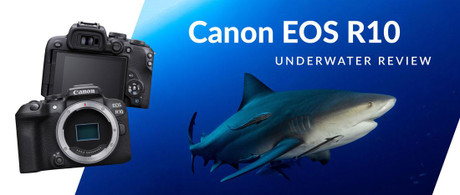Canon R10 Underwater Review
Posted by Nirupam Nigam on January 31st, 2023
The Best Value Underwater Camera System Ever
After months of diving with the Canon EOS R10 APS-C mirrorless camera, we think that this is the best value underwater camera system ever created. The R10 fills a long perceived hole in a camera market that is skewed towards higher end camera models, and it represents the perfect entry-level "prosumer" camera. At only $980 for the camera body, there is no other camera in history that has had autofocus, video capabilities, and image quality this good for the same price point.
The Canon EOS R10 is equipped with a 24.2 megapixel APS-C (cropped) sensor and can record 4K video up to 60 fps (with a crop factor). It can shoot burst photos up to 15 frames per second with the mechanical shutter, and it is equipped with the same incredible dual pixel autofocus system found on the Canon R5 and R3. This autofocus system can track moving subjects, and even recognizes the eyes of fish!
Over the last few months, we have brought the Canon EOS R10 diving in La Paz, Mexico, Palm Beach, Florida, and the cold waters of the Pacific Northwest. Equipped with the Ikelite R10 underwater housing, it has held its own in harsh environments and amazed us with it's incredible image quality.
While we think this camera system is the best value underwater camera system on the market, it's important to consider the Canon EOS R7 as well - a close sibling to R10 with more features for a higher price point of $1499 for the body. Be sure to read our full underwater review of the Canon EOS R7 as well.
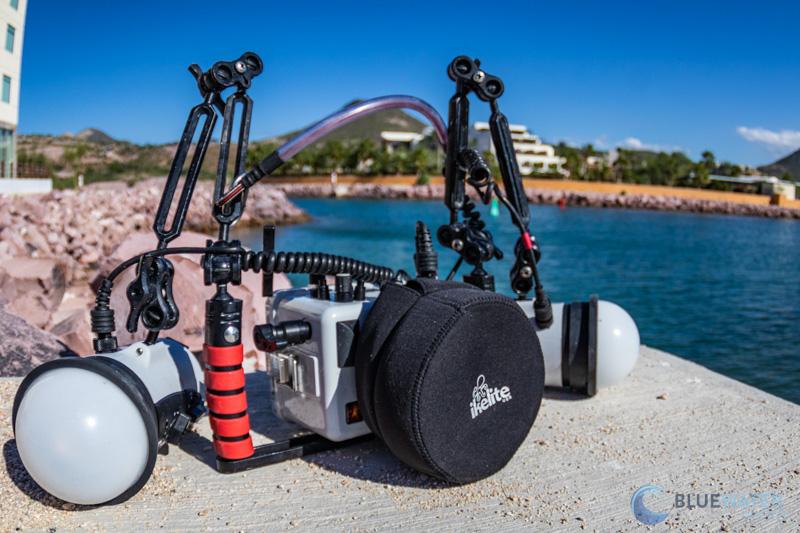
The ultimate Ikelite Canon R10 system in the field - with dual DS 230 strobes and an Ikelite TTL converter.
Jump to a Section
Canon EOS R10 Specifications | Canon EOS R10 vs R7 | Canon EOS R10 Key Features
Canon R10 for Underwater Photo | Top Lenses | Top Underwater Housings
Check out the best underwater settings for the Canon EOS R10
Canon EOS R10 Specifications
- 24.2 megapixel CMOS sensor
- Digic X image processor
- RF lens mount, can support EF lenses with the EF-EOS R adapter
- No in-body image stabilization
- Dual pixel AF II with improved animal, vehicle, people AF tracking (both photo and video mode)
- AF focusing down to -4 EV
- 2.36 million dot EVF (electronic viewfinder)
- Built-in flash
- 15 fps burst shooting (23 fps with electronic shutter)
- 4k/60p video recording with a crop
- 4K/30p recording oversampled from 6k
- Improved manual white balance
- Canon Log not supported
- Weight: 429 grams with the battery
- Size: 122.5 x 86.8 x 83.4mm
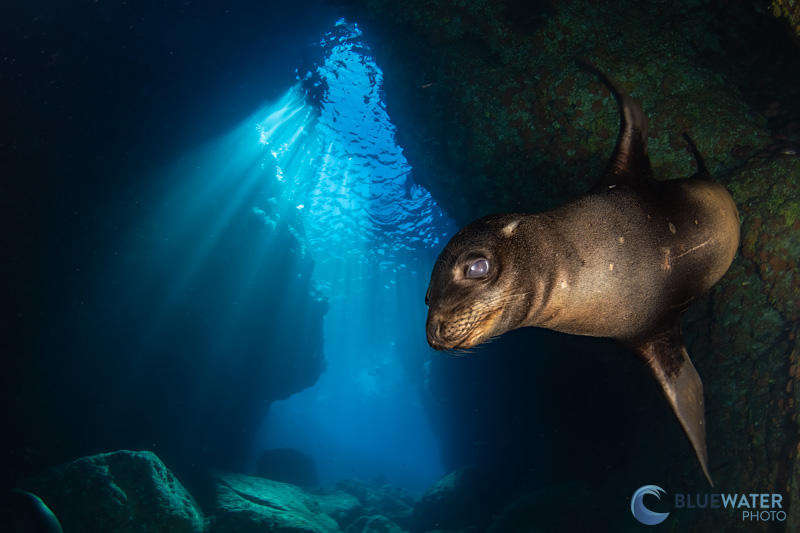
This image represents the incredible dynamic range of the Canon R10's sensor. It was taken with the Canon R10 in an Ikelite housing with dual Ikelite DS230 strobes, Ikelite TTL, and the Tokina 10-17mm fisheye lens. f/11, 1/100, ISO 250
Canon EOS R10 vs R7
The Canon R10 and R7 were released at the same time as "sibling" cameras. Though they are quite similar, they fill two different niches. The Canon R10 represents a budget option with incredible performance, whereas the R7 is the best Canon has to offer in an APS-C camera. The difference in price between the two cameras is about $500. But is it worth it?
The Canon R10 has less resolution than the R7 at 24.2 megapixels vs 32.5 megapixels in the Canon R7. We think macro shooters will benefit from the higher resolution R7 as there is not much of a hit to low light performance with the higher resolution sensor. That said, most photographers would be more than happy with a 24.2 megapixel sensor unless they are producing huge prints.
When it comes to video, the Canon EOS R10 is a very capable video camera with the ability to shoot 4K/60p footage. However, this footage does have a crop and it does not have a crop with the R7. Moreover, the R7 offers a log picture profile to capture more details after color grading during post processing. The Canon EOS R10 does not offer C-Log3.
Finally, the Canon EOS R7 has built in in-body image stabilization to allow it to take photos at lower shutter speeds without motion blur and stabilize video recording. This feature is not available on the R10.
We think when you consider a housing and ports, the Canon EOS R10 represents the best value with our Ikelite Canon R10 bundle. On the other hand, if you are looking for a high performance APS-C camera, it doesn't get better than the Canon EOS R7. If you are primarily a macro shooter or video shooter, the Canon R7 is probably worth the "upgrade".
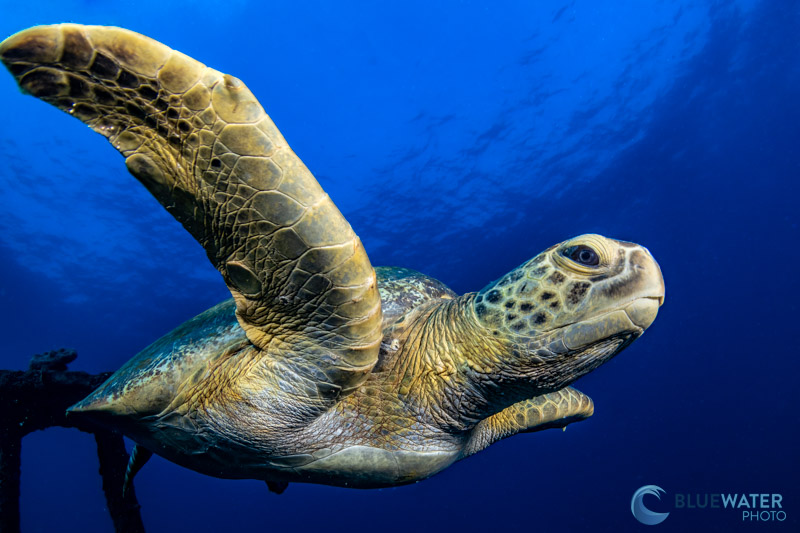
A small camera allows you to get up close and personal with shy critters like this sea turtle in La Paz, Mexico. Taken with the Canon R10, Tokina 10-17mm fisheye, an Ikelite housing, and dual Ikelite DS 230 strobes. f/14, 1/125, ISO 250
Canon EOS R10 Key Features
Incredible Image Quality
The Canon R10 boasts an impressive 24.2 MP APS-C sensor, delivering remarkable details in both highlights and shadows. In many aspects, the image quality almost mimics that of a full-frame camera, with the only difference noticeable at higher ISOs where some noise may become apparent. However, it should be noted that the noise grain is relatively minimal and can be efficiently removed during post-processing.
When compared to full-frame cameras, the APS-C sensor on the Canon R10 results in deeper depth of field, yet shallower than that of micro four thirds or compact cameras. This balance makes it an ideal choice for a wide range of photographers.

It's easy to see details in both the highlights and shadows of this photo of a lemon shark in Jupiter, Florida. The Canon R10 handles high dynamic range situations, like sunballs, quite well. As an aside, notice how well the Ikelite TTL did with the DS 230s as the shark came closer to check me out. Taken with the Canon R10 and Tokina 10-17mm fisheye lens with dual Ikelite DS 230 strobes in an Ikelite housing. f/16, 1/160, ISO 400
Quick and Accurate Autofocus
During my time taking underwater photographs, I was pleasantly surprised by the improved autofocus capabilities of the Canon R10. It outperforms its previous mirrorless models, including the Canon R5, in terms of underwater performance. The R10 is equipped with dual pixel AF II and autofocus tracking, enabling it to lock onto moving subjects with ease. Although it may not be as fast as the Canon R5 in terms of processing speed, the improved tracking algorithm allows for better recognition of fish eyes and shapes underwater. This advancement is a promising indication of what is to come in future full-frame Canon models.

This shrimp was captured with the Canon R10 and the Canon EF 100mm f/2.8 macro lens. Autofocus tracking helped me lock onto the shrimps eye in moving water.
Build Quality and Ergonomics
After a month of using the Canon R10, I have made the decision to temporarily set aside my personal full-frame Nikon Z6 for underwater photography. The Canon R10 offers a compelling combination of compactness, ease of use, and image quality, making it a practical choice for travel and diving. Despite its lightweight and plastic-like body, the R10 is robust when housed, particularly with the Ikelite DLM style housing, which is significantly smaller than the full-frame DL housing.
The R10 boasts a familiar design for Canon users, with a Q button for quick access to settings, a d-pad for cursor navigation, and two dials for aperture and shutter speed adjustment. ISO control is conveniently located on a dedicated button, and the AF-on button is easily accessible via a lever in the housing, allowing for back button focus. The Canon R10 is also equipped with a 2.36 million dot EVF, which may not have the highest resolution or refresh rate, but it serves its purpose and provides a clear view of your images. The EVF also has a magnified view option, and the autofocus performance is consistent between the LCD and viewfinder, allowing for flexible shooting through either one underwater.

Large schools of fish are easy to capture with Canon EOS R10 and the Tokina 10-17mm fisheye lens. f/22, 1/160, ISO 250
Battery Life
The Canon EOS R10 boasts a 430-shot battery life according to its specifications, but this estimation is not entirely accurate. During my month-long testing period, I found the camera to have a significantly longer battery life, allowing me to complete multiple dives without depleting the battery. Although I never drained the battery to 0%, I estimate battery life to be between 7 to 8 dives. During a day of diving, I was able to capture 500-600 shots, which, combined with the camera's impressive battery life, ensured I never ran out of power during a day of shooting. To ensure continuous operation, I recommended charging the camera ever night.
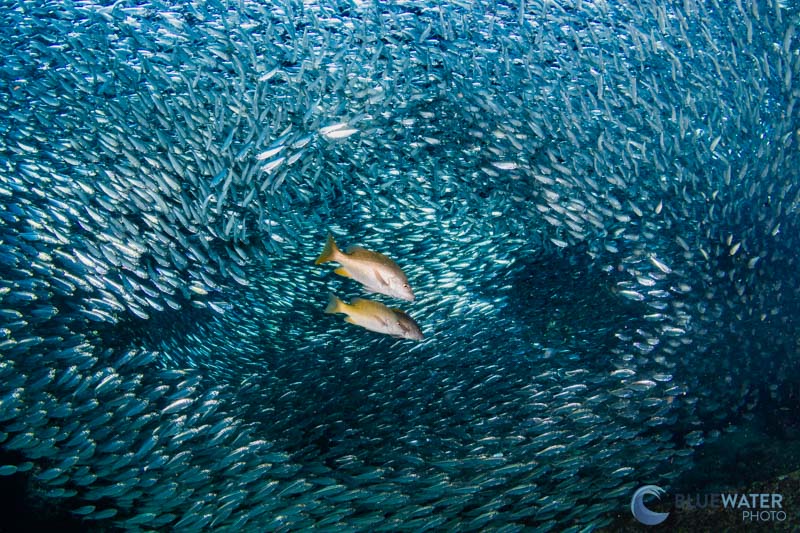
On this day I took 500 photos of sardines on a single battery and still had 50% left! Taken with the Canon R10, Tokina 10-17mm fisheye lens, dual Ikelite DS 230 strobe, Ikelite housing. f/14, 1/125, ISO 250
Beautiful 4K Underwater Video
The Canon R10 is a versatile camera that caters to both photo and video shooters. While it may not have Log profiles for post-processing like the Sony A6400, it boasts faster 4K frame rates, allowing for smooth, slow-motion footage. With the ability to shoot 4K/60p, underwater videographers will appreciate the stability and clarity of their hand-held shots in dynamic environments. However, it's worth noting that this mode features a 64% crop. If you prefer uncropped footage, you can shoot 4K video at up to 30fps, oversampled from 6K, resulting in sharper and more detailed video.
In terms of image quality, I was impressed with the standard picture profile of the Canon R10, which produced vivid and pleasing colors, especially when shooting with manual white balance. Additionally, Canon has addressed a long-standing grievance among video shooters by allowing manual white balance to be set directly from the Q menu, eliminating the need to take a photo and navigate through the main menu. However, this is only in photo mode.
Canon R10 for Underwater Photography
The Canon R10 is a remarkable camera for underwater photography, especially considering its value. While it may not be the best camera in the world, it is certainly a great option for those who want to dive into the world of interchangeable lens underwater photography and achieve results that surpass those of compact cameras.
After a month of use, I can attest to the R10's enjoyable shooting experience. Each day, I woke up eager to take it out and appreciated the lighter weight compared to my full-frame camera. The image and video quality are exceptional for the price, and the autofocus is top-notch. I have no complaints about the camera, and that just might be a first.
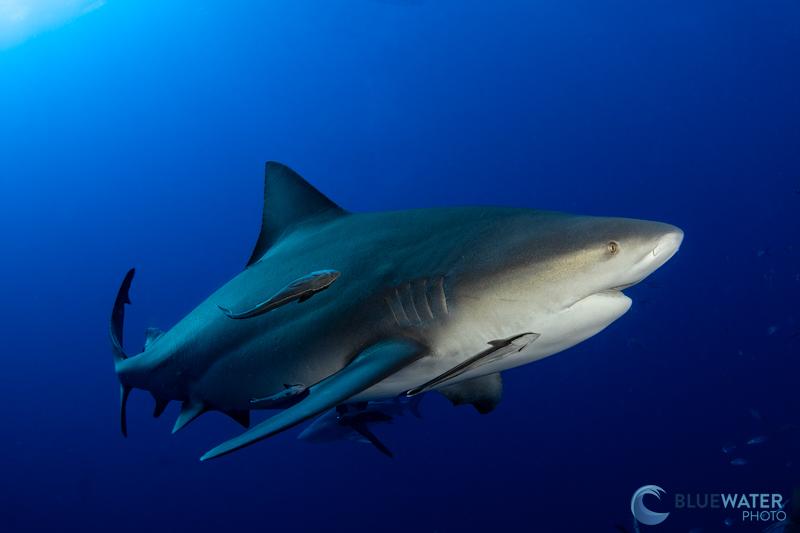
Take a look at the tail of this bull shark and the incredible details we were able to pull out of the shadow. The R10 truly accentuates this elegant creature. Taken with the Canon R10 and Tokina 10-17mm fisheye lens. f/11, 1/160, ISO 400
Top Canon R10 Underwater Lenses
The Canon R10 is equipped with an RF mirrorless lens mount and also supports EF lenses through the Canon EF-EOS R adapter, providing seamless autofocus performance.
Wide Angle Lens Options
For wide-angle photography, the classic Tokina 10-17mm fisheye lens is a popular choice among underwater photographers. This lens fits into the same port as the Ikelite Canon R10 bundle and requires the EF-EOS R adapter.
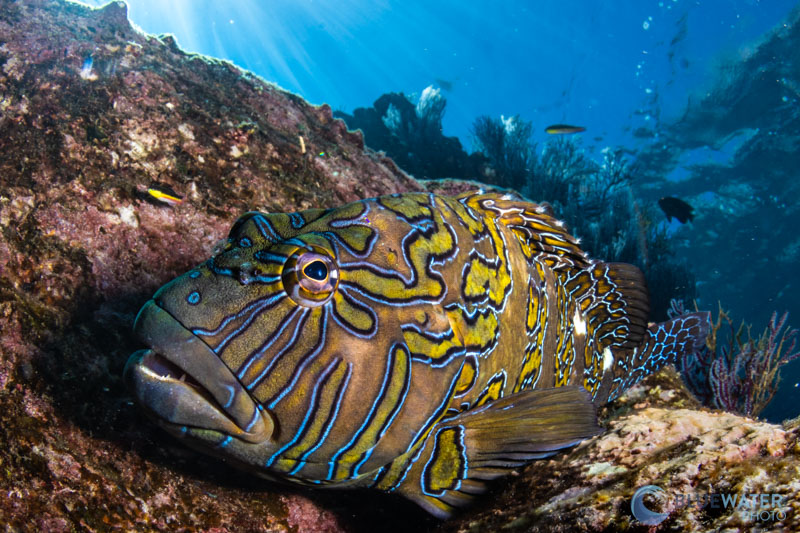
Mid Range Lens Options
The Ikelite Canon R10 bundle comes with the Canon RF-S 18-45mm f/4.5-6.3 IS STM kit lens. This lens is compact and a great all around lens for mid range photography and portraits. We think this is a nice starter lens, but you will get better results with a dedicated wide angle or macro lens.

The Canon RF-S 18-45mm kit lens does a great job of bringing out details in subjects - especially during fish portraits. Captured with the Canon R10. f/13, 1/100, ISO 250
Macro Lens Options
For macro photography, the Canon EF-S 60mm f/2.8 macro lens (discontinued) combined with the EF-EOS R adapter is a great option. The Canon EF 100mm f/2.8 macro lens with the adapter also provides a good shooting experience with more working distance from the subject. The Canon RF 100mm f/2.8 macro lens is also compatible with the R10 and considered by many as the world's best macro lens.
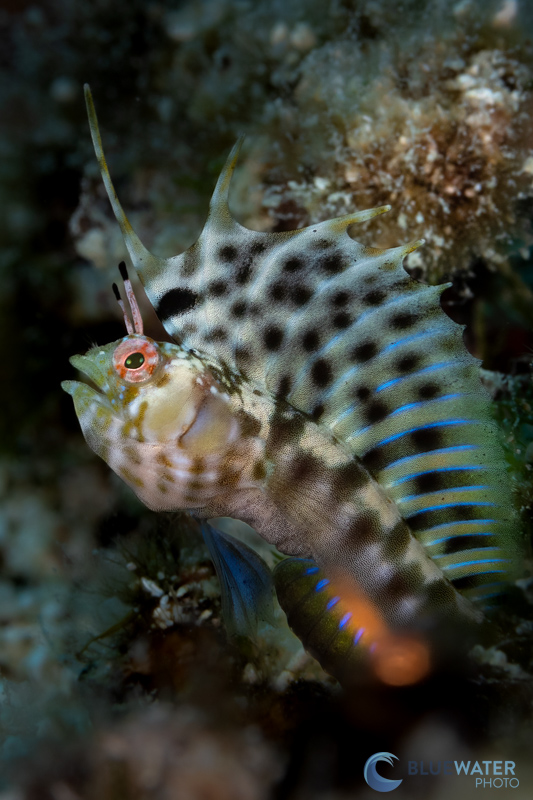
A signal blenny captured with the Canon EF-S 60mm f/2.8 macro lens and the Canon EF-EOS R adapter. Fast autofocus speeds are the only way to capture a fish like this. f/13, ISO 250, 1/200
Canon EOS R10 Underwater Housings
The Canon R10 is currently supported by a single underwater housing manufacturer, Ikelite, which is known for its excellent polycarbonate construction. The Ikelite housing boasts a variety of convenient accessories, including a vacuum leak detection system, TTL converter, and a magnified viewfinder. All camera controls, including back-button autofocus, are easily accessible with simple levers. During our testing, the Ikelite housing for the R10 proved to be highly durable, resisting any damage from rough underwater conditions. Furthermore, the rust-resistant polycarbonate construction of the housing ensures that it will remain a reliable companion for many years to come, provided it is properly maintained and rinsed after each use.
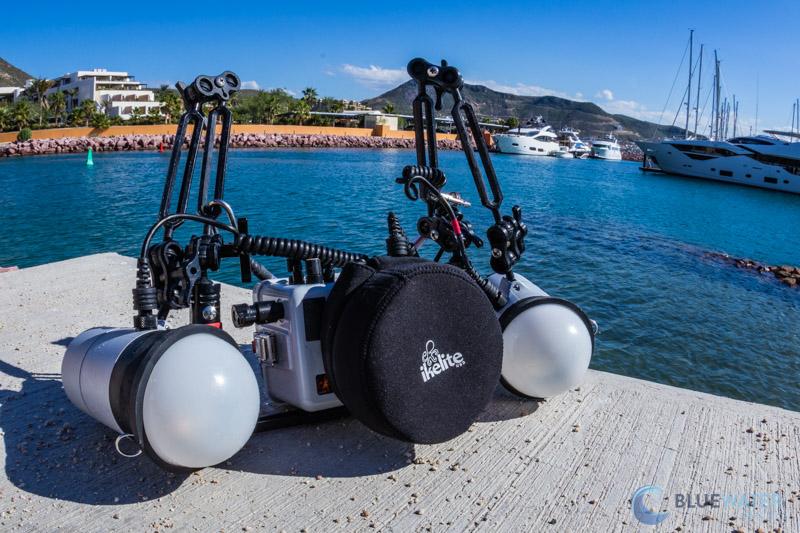
Conclusions
In underwater photoworkshops, I emphasize that it is not the camera that determines the quality of a photo, but rather the lighting and the photographer's skills. This means that a more affordable camera, like the Canon EOS R10, with its advanced features such as animal eye autofocus tracking, 4K/60p video recording, and high burst shooting, can provide the same high-quality results as a more expensive one. The availability of such technology to the general public marks a significant milestone in the field of underwater photography and opens up a world of possibilities for capturing stunning images.
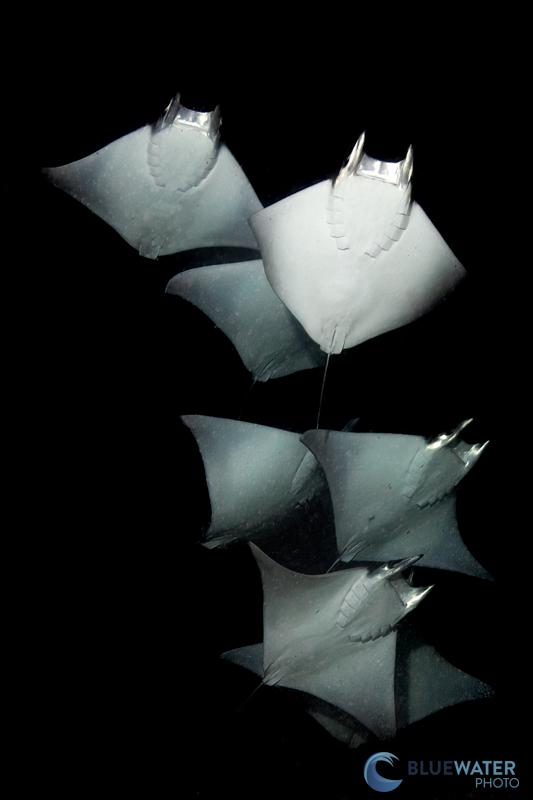
Mobula rays photographed at night with the Canon R10 in an Ikelite R10 housing and the Tokina 10-17mm fisheye lens. f/13, 1/160, ISO 100

